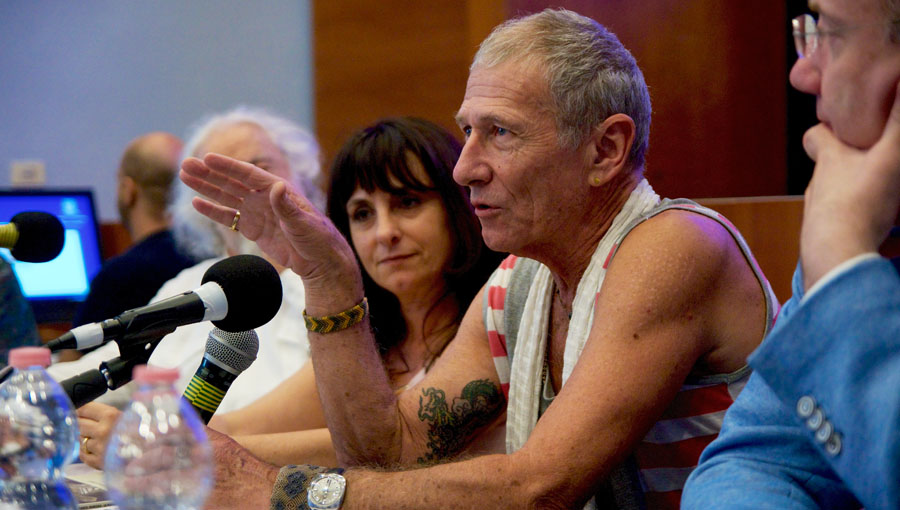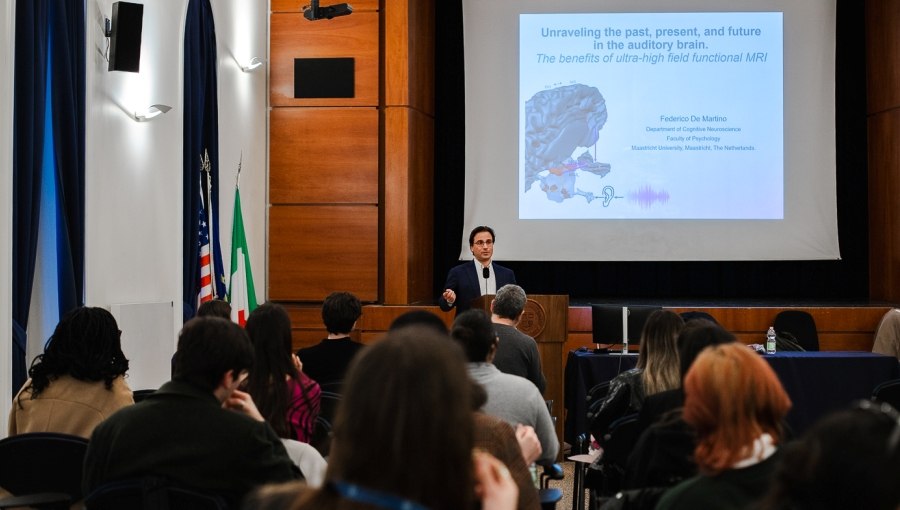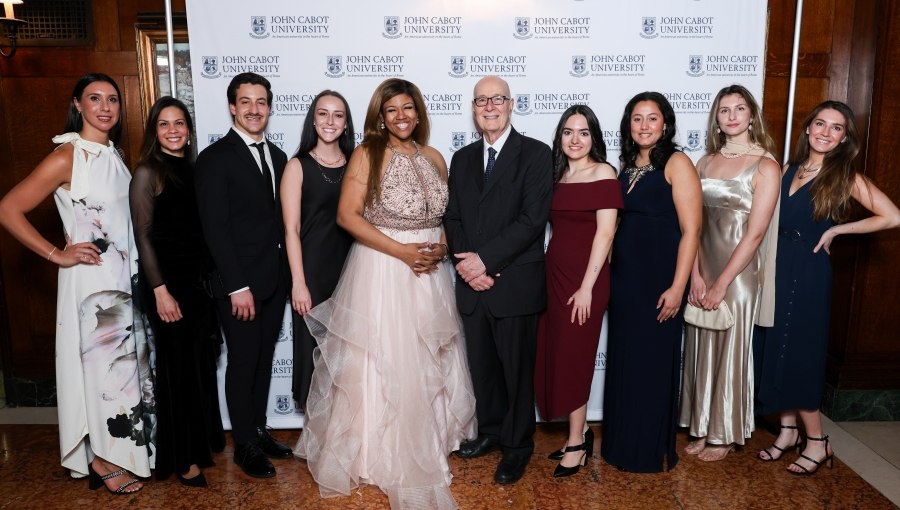Marcel Marceau, Poetics of Gesture: A Celebration of the Legendary Mime
Can a gesture be poetic? According to the great Marcel Marceau – yes. Who was he? What is his contribution to the legacy of pantomime as art? Would you consider mime as art? Author Patrizia Iovine answers these questions in her book Marcel Marceau, Poetics of Gesture, published by Casadei Libri.
John Cabot University welcomed Ms. Iovine for the presentation of her book on June 7th. Marcel Marceau, the French legend of pantomime and one of the greatest mimes on the planet, revolutionized this ancient art and inspired many generations of artists. Michael Jackson actually borrowed his signature “moonwalk” from Marceau’s “Walking against the Wind.” Inspired by silent film stars Buster Keaton and Charlie Chaplin, and the Japanese Kabuki theater, Marceau brought to life the characters of Pierrot, Harlequin, and Bip the Clown – his alter ego and one of his most iconic impersonations. He revolutionized the mime technique and always referred to it as art, one that captures the small details of gestures, emotions, and everyday life behavior in a nonverbal form.
Together with Ferruccio Marotti, Professor Emeritus at the University of Rome “La Sapienza,” Baptiste Marceau, son of Marcel Marceau and yoga teacher, Italian actor Maximilian Nisi, Marco Stojanovic, a Serbian actor and associate professor at the University of Belgrade and the president of the World Mime Organization, and translator Jane Pasquarella, author Patrizia Iovine retraced the decisive phases of the mime’s art from the origins to the 20th century. The audience had a chance to see Marceau’s magic through the video recordings of his performances, including “The Lion Tamer,” and “Youth, Maturity, Old Age, and Death.” Live music accompanied the images, with Antonio Sommese on the piano and Adalberto Muzzi on the violin, playing a selection of pieces by Bach, Piazzolla, and Williams.
Author Patrizia Iovine – a frequent collaborator with various magazines and newspapers (Momento Sera, Italia Sera, La Voce, La Provincia, Primafila, In scena, Movimimo di Buenos Aires), and a member of the World Mime Organization, underlined that her book is about both the art of mime and love. Marceau was poetic and viewed his craft as a form of art, “the art of silence.” She wrote this book so that Marcel Marceau would be remembered for his art, and the art of mime would be more appreciated.
Ferruccio Marotti met Marceau at the school of Etienne Decroux, the great French actor and mime, in Paris. He recollected how Marceau always saw mime art as an integral part of the theater. In fact, the origins of theater come from mime – gestures, body movements, stage presence – everything in addition to speaking parts that helps actors to deliver their performance Marotti remembers that Marceau had an unyielding “intellectual magnetism” that made him so famous in his time, something that no mime has experienced since. Unlike Decroux, who preferred corporeal mime with the prevalence of the torso over other parts of the body, Marceau’s performances were mostly based on the use of face and hand gestures. Marceau introduced audiences throughout the world to his art. When he first left for a U.S. tour, he was scheduled to perform for two weeks, but ended up staying for six months and his shows were always sold out.
Baptiste Marceau noted that theater is like a temple, there is an intensity that cinema cannot reproduce since actors and the audience breathe the same air. As Baptiste remembers, for his father gestures were sacred, and he embraced their universal importance. Baptiste also touched upon the similarities of yoga and mime art in relation to the use of the body. His father was a humanist and believed that art could transform humanity and make the world a better place. He kept performing at the same great level as he aged and never lost his agility, challenging society’s perception of aging artists. Moreover, he served as Goodwill Ambassador for the United Nations Second World Assembly on Aging in 2002.
Actor Maximilian Nisi said he was very intrigued by the book. The acting school he went to taught him the importance of “telling a story with your body first before you use words.” He stressed that it is important for actors to listen to their own physical movements and use every muscle of the body to form a character. He read the excerpt from Iovine’s book that resonated with him the most, highlighting “we are the creators of our own emotions.”
According to Marco Stojanovic, “this is a book about a storyteller and every theater school in the world should have a copy of it.” As Stojanovic suggested, the first storyteller was probably a mime, at a time when people were mostly communicating with gestures. Later, the voice was discovered and the body was forgotten. “The art of mime should not be underestimated today, especially since we are paying less and less attention to our body language, gestures, and movements, and have even begun to speak less, as technology develops exponentially,” he added.
Stojanovic recalls how when Marceau taught, he could not speak without moving his body. “We learned a lot from watching him. He was not acting as a teacher, he was a teacher. Today, we share pictures on social media, but we do not share our emotions. He was sharing them with the audience.” Eleven years after his death, Marceau is still a role model. “We created the World Mime Organization in his memory,” said Stojanovic. Moreover, World Day of Mime is now celebrated on the day of Marceau’s birthday – the 22nd of March. Stojanovic concluded by saying that any kind of movement creates intelligence and everyone should teach their children the art of mime.








